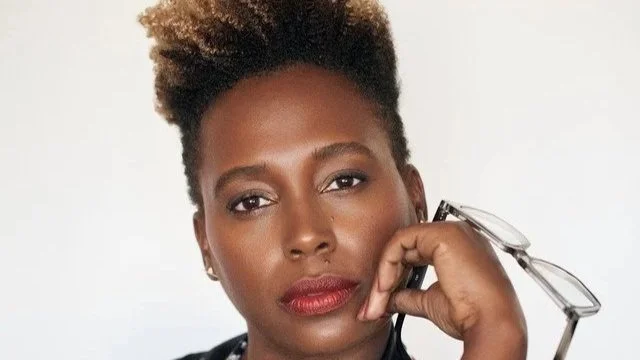BlackHERstory Month: Queer Black Author Brings Caribbean Culture to Science Fiction
photo courtesy of CC Mag
written by Alya S.
Imagine the neighborhood you’ve lived in destroyed. You walk down the street, the cold air hitting your face, passing shattered windows of businesses and storefronts you once frequented. It’s eerily quiet. Something rustles and you look up. Eyes through window blinds peer at you and quickly hide. The rustling continues. You pause and hear footsteps over broken glass. Her appears, dark and devilish he grinning at you. It’s Jab Jab.
This is the kind of story that comes to mind when I think Caribbean-culture-meets-sci-fi in a novel. Black voices in the less-visited literary genre have emerged over the past few decades. Nalo Hopkinson is a queer Jamaican writer whose work centers around telling Caribbean stories. Reinvigorated movements such as Black Lives Matter deeply encourage empathy. To better understand the Black experience, one can read the work of Black authors who amplify such voices. Hopkinson’s debut novel “Brown Girl In The Ring,” is a science-fiction novel that continues to highlight generational healing through Caribbean folklore and spirituality in 2021 —23 years after its debut.
[Additional Read: Meet Yolanda T. Marshall: The Caribbean-Canadian Mom Whose Creating Caribbean Children’s Books]
Hopkinson was born in Jamaica and grew up in Trinidad and Tobago, Guyana and Toronto, Canada. Her Caribbean heritage is often reflected in her work. But the author is much more than an avid writer. She is a symbol. Hopkinson is also a neurodivergent author, having ADHD and a non-verbal learning disorder. Nonetheless, she has not let this or her fibromyalgia stop her. Hopkinson has published 16 books since her 1998 debut and is a professor at the University of California. She also holds countless awards from multiple countries, including the British Fantasy Award, Nebula Award, and Gaylactic Spectrum Award. Hopkinson continues to be recognized in the writing sphere as a pillar in science-fiction.
"Brown Girl In The Ring,'' was first published in 1998. The novel is set in a post-apocalyptic Toronto. Riots have destroyed downtown Toronto and the rich have moved to the suburbs, while the poor are left to fend for themselves in the remains of the city. The protagonist Ti-Jeanne, a single mom and new mother living in the heart of the city must move back in with her grandmother to help care for her son. During this time, Ti-Jeanne also has many run-ins with mythical beasts from the Caribbean folklore such as the jab-jab and the soucouyant. Meanwhile, the city is now being controlled by the criminal mastermind Rudy who has just been commissioned to find a human heart donor for the province's head of government, the Premiere. Magic from the present and spirits from the past become entangled as Ti-Jeanne tries to protect those that she loves in such dire circumstances.
Hopkinson's work discusses many themes that are as relevant today as when the book was first published 23 years ago. Ti-Jeanne has a difficult time accepting her grandmother's spiritual work as a real means of protection. She does not believe that rituals and ancestors can impact the living. This generational disconnect causes a strain in their relationship, despite loving one another deeply. The provinces' elite failing to provide a safe living situation for poor people of color in the city is also a relevant topic today. Instead of using their resources to rebuild the city, the rich simply abandon it. Without law and order, the city then becomes rife with crime. This is something that happens today in many cities when governments fail to provide proper equal opportunity.
The class struggles in the book reflect those in the reality we live in today. Hopkinson’s work has forced many to reflect critically on the institutions that make up their communities and has inspired them to actively work towards change.
“The African powers, child. The spirits. The loas. The Orishas. The oldest ancestors. You will hear people from Haiti and Cuba and Brazil and so on call them different names. You will even hear some names I ain’t tell you, but we all mean the same thing.” -Nalo Hopkinson “Brown Girl In The Ring”
"Brown Girl In The Ring'' is a celebration of Black resistance, Caribbean culture, and ancestral spirituality. For many, these go hand in hand. By embracing her culture throughout her work, Hopkinson is bringing Caribbean stories to the forefront. Hopkinson is one of the few female Black authors to have entered the male-dominated genre of sci-fi and does so while creating critical acclaim. To learn more about the author visit her website.











